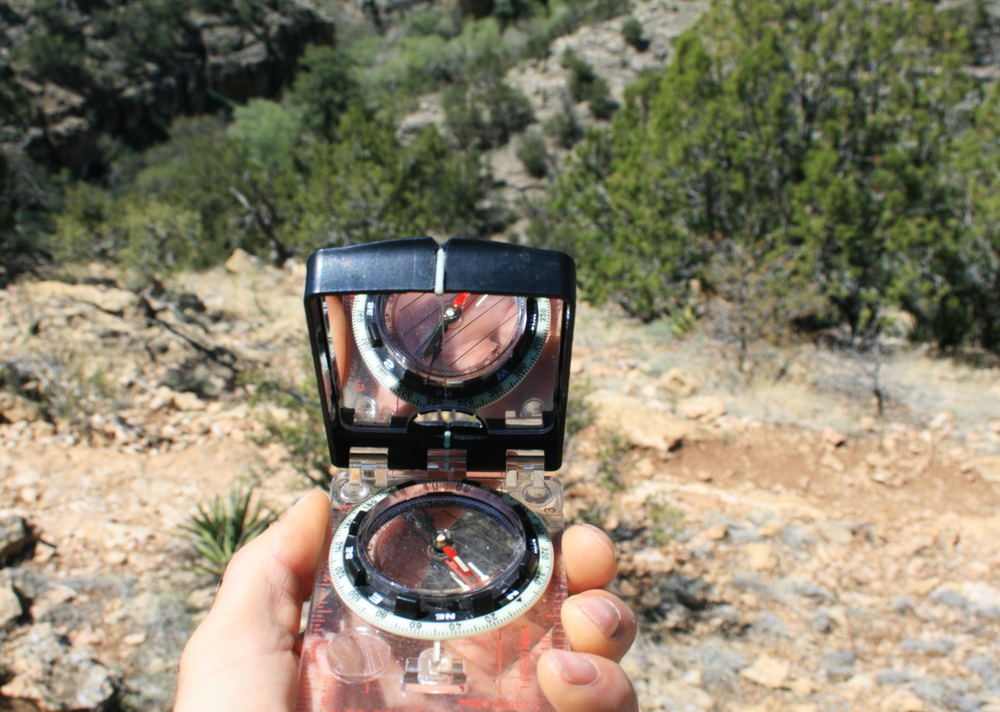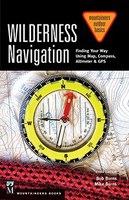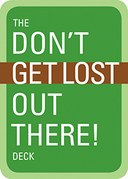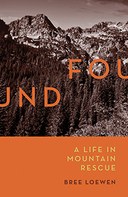
We love exploring, especially the wild places that offer a serene tranquility away from it all. Sometimes, though, we get too far away. And that's when tranquility turns into bewilderment. So pack a map and take some tips from Wilderness Navigation by Mike and Robert Burns.
Note: The purpose of Wilderness Navigation is to PREVENT you from getting lost. So one should already have a good grasp of using maps, compasses, and other navigation tools already before setting out on a trip. And if you are not proficient in navigation skills, a brief list of tips does NOT suffice as proper training. Stay safe! Better to go on lots of adventures than be on your last adventure.
Before the Trip:
Most wilderness orientation, navigation, and routefinding is done by simply looking at your surroundings and comparing them to the map. This process is often aided by making some navigational preparations before the trip, like identifying handrails, baselines, and possible routefinding problems.
A handrail is a linear feature on the map that you can follow, or it may be a feature that parallels the direction in which you are heading. The handrail should be within frequent sight or sound (such as a noisy babbling brook) of the route, so it can serve as an aid in navigation. Features that you can use as handrails during a trip include:
- Roads
- Trails
- Railroad tracks
- Powerlines
- Fences
- Cliff bands
- Borders of fields and meadows
- Ridges
- Valleys
- Lakeshores
- Edges of marshes
- Rivers and streams
A baseline is a long, unmistakable line that always lies in the same direction from you, no matter where you are during the trip. Pick out a baseline on the map during trip planning. It does not have to be something you can see during the trip. You just have to know that it is there, in a consistent direction from you. A baseline (sometimes called a catch line) can be:
- A road
- An obvious trail
- The shore of a large lake
- A river or creek
- A powerline
- Any other feature that is at least as long as your trip area
For example: If the shore of a large distant lake always lies west of the area you will be in, you can be sure that heading west at any time will eventually get you to this identifiable landmark. Heading toward this baseline may not be the fastest way to travel back home from your destination, but it may save you from being truly lost.
It is wise to prepare a route plan: a well-thought-out description of how you will find your way to your destination and back, including handrails, baselines, trails, topographic features you will be following, and other aspects of your proposed wilderness trek. It is also a good idea to highlight the entire trip on a topographic map.
- Identify handrails, baselines, and other features that you
will be following on the way to your objective. Part of this plan is to recognize potential routefinding problems. For example, if the route traverses a large, featureless area, you may need route-marking materials, particularly if the weather outlook is marginal. Be sure to carry such materials if your route plan indicates a possible need for them. - Make a note of any escape routes that can be used in case of sudden bad weather, injury, or other setbacks.
- If off-trail travel is involved, measure compass bearings at
home before the trip and write them down in a notebook or
note them on the map. It is certainly possible to measure map bearings at any point in the trip, but it is easier and sometimes more accurate at home on a desk or table, and it might save you time in an emergency. - Write down and discuss your route plan with other
members of the party, so the party is not solely dependent
on one person for all route decisions. You might consider
requiring all party members (or at least children or
inexperienced persons) to carry whistles. - Be sure to tell a responsible person where you are going,
what route you are taking, and when you plan on returning.
This will not prevent you from getting lost. But if you do run into trouble, the authorities will know to look for you, and where to look. This one bit of preparation could save your life. (It could be as easy as texting a friend while you are still within cell phone range, such as “Day trip to Lk 22 with Dad and Ron. Silver Ford Fusion WA license SHWK12. Will text u when we return.” It could be more elaborate, such as marking a copy of a topo map with your planned route and emailing it to your responsible person, along with the trip schedule.)
Other tips
Assign a responsible, experienced person to be the rear guard, or “sweep,” to ensure that no straggler will be left behind or lost.
If your party is indeed lost? The first rule is to stop. Resist the temptation to press onward. The moment you are ever unsure of your position, you should stop.
Try to decide the last time the group did know its exact location. If that spot is fairly close, within an
hour or so, retrace your steps and get back on route. But if that spot is hours back, you might instead decide to head toward the baseline.
If it begins to look as though darkness will fall before you can get back, you might have to bivouac for the night. If so, start looking for an adequate place, with water and some sort of shelter if possible, well before dark.
And finally, as the old phrase goes: "Most climbing accidents happen on the way down." In almost every case, a trip goes wrong when people are overconfident, or take on more than they are prepared for. So remember, just because you have a good idea of what to do, one should still practice under experienced guidance before embarking into the wild.
 Excerpted from Wilderness Navigation (Mountaineers Books, February 2015) by Mike and Robert Burns. To learn more about navigating the wilderness, make sure to pick up your copy today.
Excerpted from Wilderness Navigation (Mountaineers Books, February 2015) by Mike and Robert Burns. To learn more about navigating the wilderness, make sure to pick up your copy today.
 Mountaineers Books
Mountaineers Books

